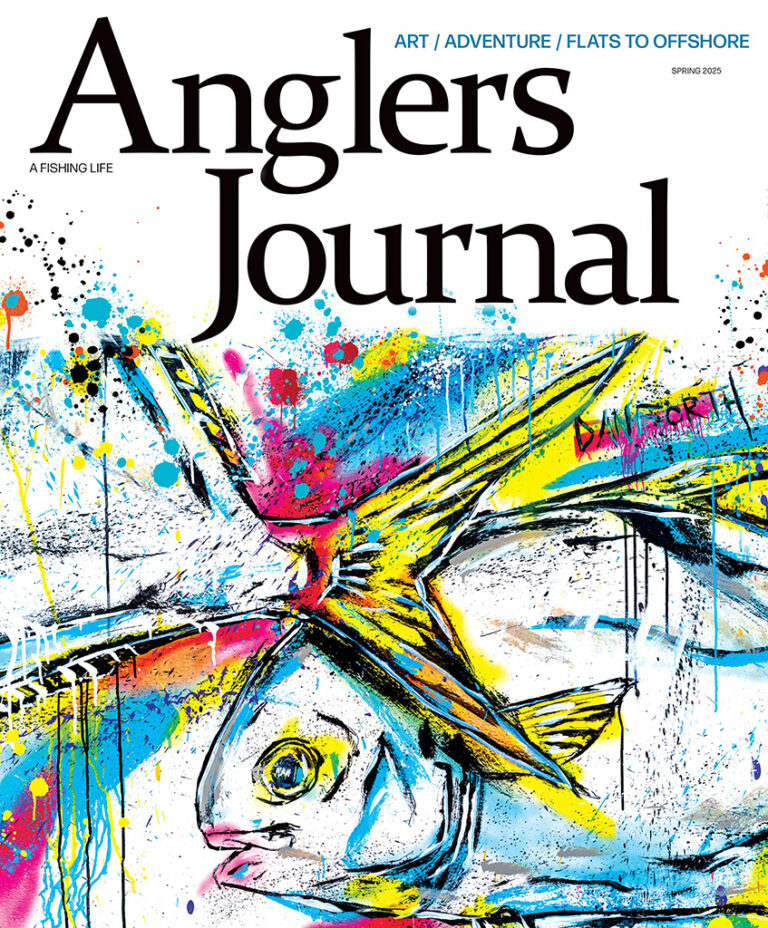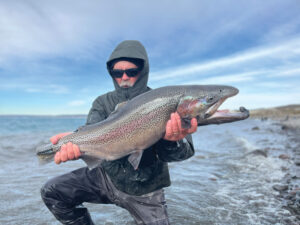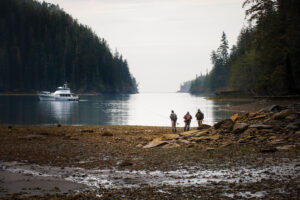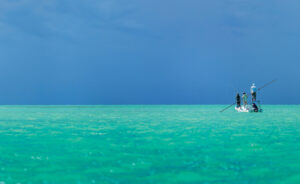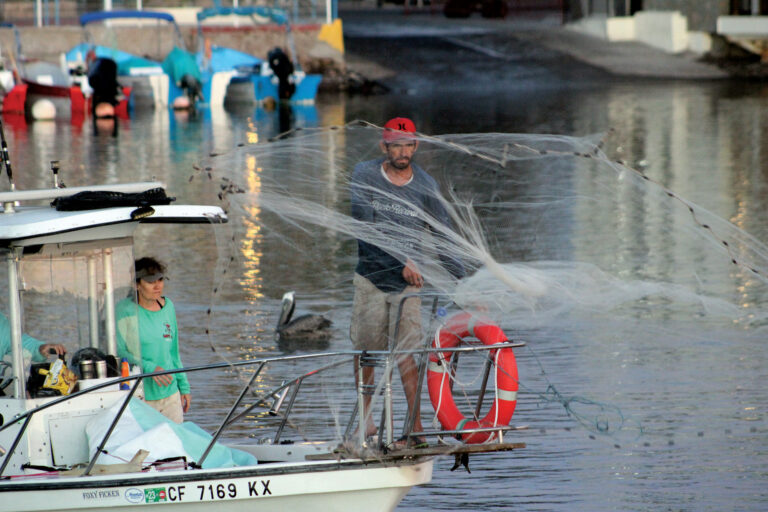Do Atlantic salmon feed when migrating upstream?
This enthusiast has plenty of reasons to believe they do.
Whether it’s called folklore, an old wives’ tale or common myth, fishing seems to have more than its share, and some beliefs are easily disproven but rigidly adhered to. Take, for instance, the belief that Atlantic salmon do not feed during their upstream migration to spawn.
Nonsense.
Atlantic salmon have mesmerized me since I hooked my first 25-pounder on a big, fluffy White Wulff dry fly at age 10. I can still recall the fish emerging from its bottom cover to inhale my offering. Since then, I have hooked, lost and landed thousands more — and I feel strongly that the theory about upstream feeding is incorrect. They may also take flies for other reasons, but feeding should not be ruled out.

My first inkling about the truth came 60 years ago, when an uncle took me with his family for a driving/camping trip around Nova Scotia. My cousin and I got to hang out in the campgrounds and forests while Uncle Woody went salmon fishing on the Stewiacke and St. Mary’s rivers. I had only caught trout on flies but had caught a number of saltwater gamefish on other tackle, and I would rather have been with Uncle Woody. I saw a teenage boy with a spinning rod and a can of worms in a fly-fishing-only spot. He glowered at us, then baited the hook and lobbed it out into the river. Within 10 minutes, he’d hooked and landed a salmon of about 7 or 8 pounds. He told us to keep our mouths shut or he’d pound the #%@&! out of us. I didn’t care; I was envious of his catch.
What stayed with me about that trip was the ease with which that teenager took a fish, while my uncle complained daily about catching nothing. And the fact that worms or other baits are considered too effective to allow them to be used had to mean something, too. If salmon don’t eat, then why would there be any difference between Uncle Woody’s luck and that teenager’s?
Many years later, I watched an angler worm-fish a pool on the Laxa Hitara in Iceland and stack up a bunch of salmon for the smoker. I continued to wonder, If this fish does not eat, why did it inhale a gob of worms and become gut-hooked almost every time? The behavior is too close to feeding to be instinct, aggression or anything else. If it looks like a duck, walks like a duck …

It’s a slim few anglers who agree with me. One of them was Lou Butterfield, a famous Miramichi River angler and inventor of the Whisker (and, I believe, the Butterfly). Love him or hate him, Lou caught thousands of salmon. He believed they would take big insects, then crush out the nutritious innards and spit out the remainder. He said he had spent hours on several rivers in Canada’s Gaspé Peninsula observing this behavior. From a perch above a crystal-clear river, he would lob grasshoppers to holding fish and watch what happened after a fish would take his offerings.
I have caught many salmon on the Miramichi River with chubs in their throats or mouths, yet they still take the fly. That behavior sounds like feeding to me. I have yet to find a parr, but that may be more a function of where I am fishing and where the parr are feeding than any discrimination on the part of the salmon. Another coincidence: In most salmon waters where the fish show to any degree, they most often do so at the time of day, and under the same conditions, when one normally finds good insect hatches.
Back in the ’70s, the Butterfly was popular on the Miramichi because of the high number of gypsy moths. Many anglers saw fish take a fluttering gypsy moth off the surface. I recall one occasion when several fish being cleaned had bulging stomachs crammed with gypsy moths — those were the days when a lot of fish were killed. Feeding again, I thought.
I’ll concede the point that salmon don’t feed in rivers like they do in the ocean environment. If they did, they would devour far too many of their own young, an evolutionary no-no. However, there’s also the physiological changes that the fish goes through when migrating from salt to fresh water. In salt water, the surrounding environment is always trying to pull moisture out of the fish, which expends approximately 15 percent of its energy fighting this tendency. When a salmon enters fresh water, it controls the water that permeates its body through a process called osmoregulation. It allows the fish to be far more efficient with its energy consumption in the river.
 Salmon Ascending a Falls
Salmon Ascending a FallsAnd while I do not profess to be a marine biologist, it is possible that uric acid in the fish’s system mitigates the moisture extraction in salt water. Uric acid is known to play an important part in water conservation for birds. When the fish enters fresh water, uric acid may channel into its stomach, forming highly acidic green bile. What little the fish does eat is quickly dissolved in this high concentration of acid — perhaps one of the reasons that stomach-content examination rarely leads to the kind of concrete results I saw on the Miramichi.
At the same time, research conducted mainly for the Atlantic salmon aquaculture industry shows that Atlantic salmon smolts moving from freshwater rearing tanks to saltwater grow-out pens go through a period of anorexia. It is possible that the reverse migration from salt to fresh water could have the same sort of impact on the returning adults — an idea that has seen less research. Certainly, we know that after wintering in the river, salmon feed actively as they drop downriver. The feeding activity may be a combination of acclimation to the environment and the lack of spawning hormonal changes. Whatever it is, they most certainly are feeding as they move back to the ocean.
When Atlantic salmon migrate from freshwater lakes up rivers to spawn, they can be much more aggressive takers — and, I suspect, feeders. The reason is that they do not have to go through the physiological changes that fish coming out of the ocean do. This is also true of steelhead migrating out of the Great Lakes. They are actively feeding during their upriver spawning migration. Like all fish that are preparing to spawn, they go through substantial hormonal changes that may well affect their feeding habits, too: the closer to spawning time, the greater the hormonal impact.
In some of these situations, it is likely that male fish will display aggressive tendencies toward anything they see as invading their territory. Thus, the commonly believed theory of taking a fly as an act of aggression. And yes, the effects of environmental changes, physiological changes and hormonal changes certainly lessen the fish’s desire to eat, but I do not believe they eliminate it. I believe that in some instances, when factors such as water temperature or barometric pressure might make a salmon less inclined to take in a normal feeding pattern, some presentations will trigger a reflexive instinct to take.
I acknowledge that as the annual migration season matures, aggressive tendencies increase in male fish. But if aggression is the reason salmon take, why are 99 percent of the fish hooked inside the mouth? Wouldn’t more of them be hooked somewhere on their head rather than in the corner of the jaw or the roof of the mouth? And it’s also a fact that a salmon, after taking a wet fly, will hold it while returning to its lie. This is not an aggressive trait. It could be an instinctive reaction based on years as a juvenile in the river. If that instinct prompts the strike, the result is a bug consumed.
Does it make sense that a fish could come into the river in June, move to some headwater pool and hold there until late October to spawn, then remain in the river until April without some sort of feeding? In some cases, this could mean almost 10 months of living off stored fat. In some Great Britain rivers, it can be more than 12 months. Sure, their metabolism under the ice slows to a crawl, but in the spring, on the trip downriver, they are actively feeding.
Almost everything I have learned about this fish says that it is feeding in its upriver migration, too. But old myths are hard to disprove. Think about that when you land your next Atlantic salmon hooked in the roof of its mouth. Conventional wisdom says this was just chance. Really?

